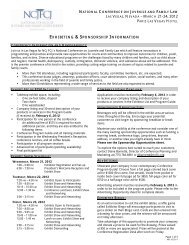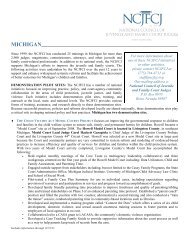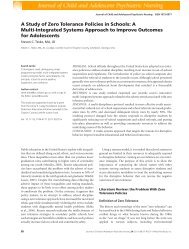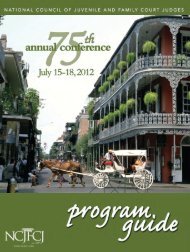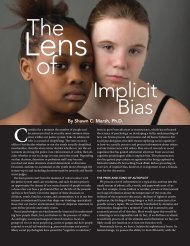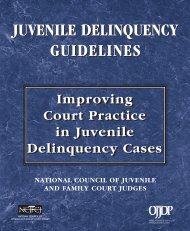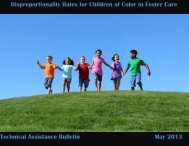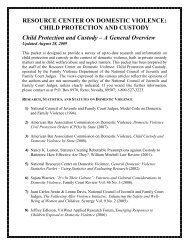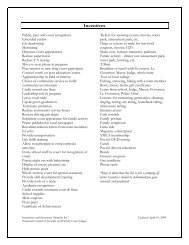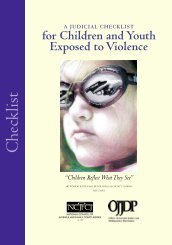EDUCATION UNDER ARREST: - Justice Policy Institute
EDUCATION UNDER ARREST: - Justice Policy Institute
EDUCATION UNDER ARREST: - Justice Policy Institute
- No tags were found...
Create successful ePaper yourself
Turn your PDF publications into a flip-book with our unique Google optimized e-Paper software.
20 JUSTICE POLICY INSTITUTEbrutality, including students being hit withbatons, thrown into lockers, stomped on, andhandcuffed and placed in a room, alone forhours. 69 Of 131 students surveyed in one schoolin Palm Beach County, 35 percent said they feltprotected, while 65 percent said that they felt“something other than protected, includingintimidated and harassed.” 70The ACLU of Michigan also found numerousexamples of students feeling intimidated bySROs because they tend to arrest first and askquestions later and, in some cases, they haveused force under concerning circumstances. Asone example, a student became agitated becausehe was going to be suspended and removedfrom the school premises; after threatening tofight with the officer, the officer tasered thestudent. 71 These incidents of violence are notonly disruptive in school, but students also learnto distrust police in their communities.An increased presence of police in schools alsoremoves the opportunity school officials oncehad to teach students proper behavior andconduct that can be applied after school, in thecommunity, and at a job. 72 For example, fightingstudents could be taught how to diffuse aconflict, rather than be arrested and adjudicateddelinquent. In fact, peer mediation, student-ledconflict resolution, and restorative justice have allbeen shown to reduce incidents of harm atschools, be a good educational experience, andcreate a sense of satisfaction for studentsinvolved, including the student that experiencedharm. 73SOME CHILDREN INTENTIONALLY LEFT BEHIND?High stakes tests, especially associated with No Child Left Behind, were widely adopted in the early2000s. Although a purpose of the tests may have been to identify students needing additionalassistance, they became an instrument that school districts, states and the federal government use todetermine if the school is performing and meeting “annual yearly progress.” Schools thatunderperform are subject to a number of consequences, not the least of which is being labeled a“failing school” from which students can transfer.As a result, schools are under immense pressure to ensure that their students meet annual yearlyprogress, particularly schools that serve students that face challenges related to educationalattainment. An achievement gap between white students and black students, English languagelearners, and students with special needs all pose challenges to school performance.At the same time that No Child Left Behind has become part of school systems, zero tolerancepolicies and the use of SROs have only grown in popularity. A coalition of organizations called Dignityin Schools has gathered extensive evidence indicating that these tests are not only used as ameasure of school performance but a means by which schools determine which students might betargeted for suspension, expulsion or arrest. In other words, by removing underperforming students,schools would perform better. Increases in referrals to the juvenile justice system from schools notedin Texas, Philadelphia, Chicago, Florida, Denver, and Louisiana may be indicators that “test, punish,and push out” may be a growing practice.Source: Advancement Project, Test, Punish, and Push Out: How Zero Tolerance and High Stakes Testing FunnelYouth Into the School to Prison Pipeline, (Washington, DC: Advancement Project, 2010).www.advancementproject.org/sites/default/files/publications/rev_fin.pdf




